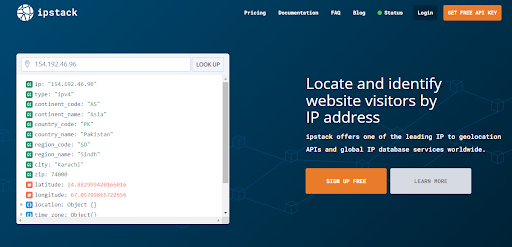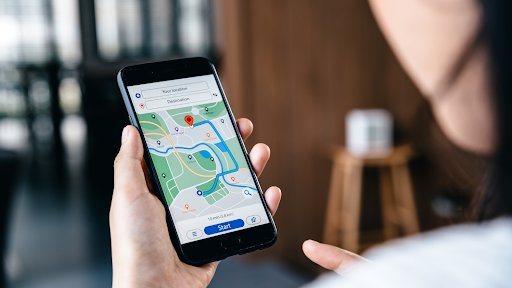
Best Practices for Using Location Services API in Your Web Development Projects
In today's interconnected world, location-based services have become integral to numerous web development projects. Integrating web location API into your web applications can provide invaluable benefits. However, implementing a Location Services API requires careful consideration and adherence to best practices to ensure optimal performance and efficiency.
In this blog, we will explore the fundamental concepts of Location Services API and delve into the best practices. We will start by understanding what a Location Services API is and how it functions in web development. The blog will introduce IPstack, a popular web location API provider offering comprehensive features and functionalities.
Moreover, we will discuss how it leverages IP geolocation data to provide accurate information about a user's location. Next, we will dive into the benefits of utilizing Location Services API in web development. To ensure smooth integration and optimal performance, we will outline best practices for using Location Services API.
Join us as we embark on this journey to discover the best practices for utilizing Location Services API in your web development projects.

What Is a Location Services API?
A Location Services API is a programming interface that allows web developers to integrate location-based functionalities into their applications. It provides a way to retrieve information about a user's geographical location based on various inputs, such as IP address, GPS coordinates, or user-provided data.
The primary purpose of a Location Services API is to enable developers to access and utilize geolocation data in their web applications. Moreover, the data can include details like the user's country, city, latitude and longitude coordinates, time zone, and other relevant information.

IPstack
IPstack is an API for IP geolocation that offers real-time lookup of accurate locations for your website visitors. It lets you easily access the necessary information in JSON or XML format. Hence, ensuring quick retrieval and seamless processing.
Utilizing a tool like IPstack provides several advantages. Firstly, it enhances threat detection efficiency from potentially risky IP addresses. By swiftly identifying these addresses when they visit your website, IPstack contributes to maintaining a secure browsing environment.
Furthermore, IPstack enables you to customize the user experience based on visitor location. For instance, you can determine a user's country through their IP address and dynamically adjust language settings to match their location.
Additionally, you can prioritize and display region-specific content, tailoring your website to cater to the preferences and needs of users from different areas.

How Does the IPstack Location Services API Work?
The IPstack API is an IP geolocation service that provides accurate location information based on IP addresses. It follows a straightforward process to retrieve and deliver this data to developers.
When a request is made to the Ipstack API, it involves providing an IP address as input. Moreover, this IP address can be obtained from the visitor's device or any other relevant source.
The Ipstack API then processes the IP address and queries its extensive database. Moreover, it contains mapping information between IP addresses and geographical locations. This database is regularly updated and maintained to ensure accuracy and reliability.
Upon retrieving the relevant information, the IPstack API formats the response in popular formats such as JSON or XML. This allows for easy integration and processing within web applications.
What Are the Best Practices for Using Location Services API?
Here are some best practices that you must follow for using the location services API key.
Exponential Backoff
In some cases, there may be issues with fulfilling your request, resulting in HTTP response codes like 4XX or 5XX, or a failure in the TCP connection between your client and the server. It can be beneficial to retry the request, as subsequent attempts may succeed even if the initial one failed. However, continuously making repeated requests to the server can overload the network and cause difficulties for multiple parties involved.
A more effective strategy is to retry the request with progressively longer intervals between attempts. Typically, the delay is increased using a multiplicative factor for each subsequent attempt. This technique is referred to as Exponential Backoff, and it helps mitigate network congestion and ensures a smoother operation.

Synchronized Requests
It is crucial to avoid synchronizing API requests across clients to prevent large synchronized requests that resemble a Distributed Denial of Service attack on Google's infrastructure. For instance, if an application sets the alarm to update the displayed time every minute, it should not make API calls during that alarm-triggered processing.
Synchronizing API calls to fixed alarms, such as the start of a minute, creates concentrated spikes in traffic, causing a significant increase in load. Instead, a recommended approach is to introduce a second alarm set at a random time. When this alarm activates, the application can make necessary API calls and store the results for future use.
During the display update at the start of each minute, the application can utilize the stored data instead of making additional API calls. This approach distributes the API calls evenly over time and prevents delays in rendering when updating the display.
Apart from the start of a minute, caution should also be exercised to avoid targeting synchronization times at the beginning of an hour or at midnight, the start of each day.
Processing Responses
It is important to consider the parsing scheme to extract specific values from web service responses. The responses may be easy to comprehend when using the Google Maps web services but not user-friendly. Instead of displaying a complete dataset, extracting only the relevant values is often desirable. The parsing approach depends on the output format, such as JSON. If the response is in JSON, which is already in the form of JavaScript objects, it can be processed directly within client-side JavaScript.

Conclusion
Incorporating a Location Services API into your web development projects can greatly enhance the functionality and user experience of your applications. You can access accurate real-time location information and utilize it to personalize content, target specific user demographics, and optimize user interactions.
However, to ensure the smooth integration and efficient usage of Location Services API, it is crucial to follow best practices. Implementing exponential backoff, synchronized requests, and effective response processing can maximize performance, handle rate limits, and streamline data extraction.
FAQs
Is Location API Free?
The availability and pricing of Location API services vary. Some providers offer free tiers with limited features and usage.
Is Google Location API Free?
Google offers a free tier for the Google Maps Platform, which includes the Google Location API.
How Do I Get Google Location API?
You can visit the Google Developers website to obtain the Google Location API and access the relevant documentation and resources.
How to Get Current Location Using API?
To get the current location using IPstack API, provide the user's IP address as input for accurate geolocation data.
Try IPstack API today and revolutionize your user experience!